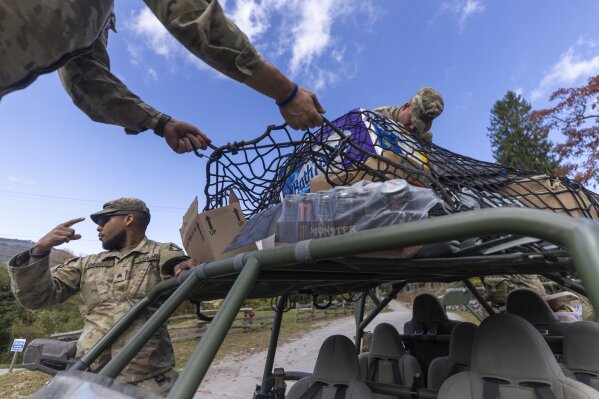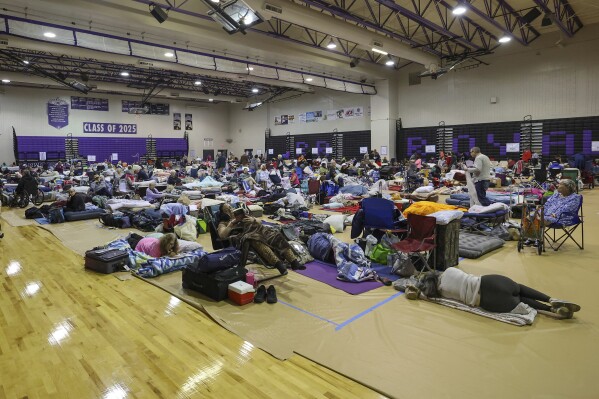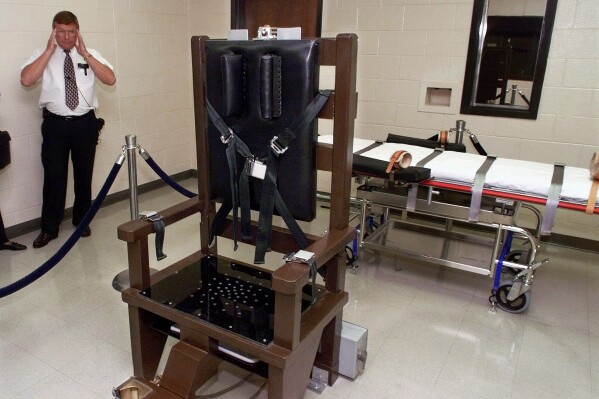As co-founder and executive director of the Hmong American Farmers Association in Minnesota, Janssen Hang has met Gov. Tim Walz several times. It’s usually been on farmland with Walz in his trademark red flannel shirt.
“I’ve seen that red flannel multiple times.” Hang said, laughing. “I think he will be a wonderful candidate because he speaks from the heart...He’s not a third-generation senator’s son or some big business guy.”
Hmong Minnesotans were among those who watched as Walz was catapulted onto the Democratic presidential ticket with Vice President Kamala Harris two months ago. They have watched him crisscross the country and last week debate Republican Ohio Sen. JD Vance.
Hmong American state lawmakers and community activists say Walz has built a mostly positive reputation with Minnesota’s largest Asian ethnic group. They point to past legislation, a willingness to reach across the aisle and attendance at community events from festivals to funerals. Now, a lot of these supporters want to show how much influence the Hmong American population has by getting out the vote with fellow Hmong in battleground states.
Walz has his fair share of Hmong detractors who say he’s done little to protect small businesses, especially in the aftermath of demonstrations and civil unrest where George Floyd was killed in Minneapolis. Still, with Asian Americans, Native Hawaiians and Pacific Islanders being one of the nation’s fastest-growing voting blocs, Walz’s relationship with eligible Hmong voters could potentially send ripples in swing states like Wisconsin and Michigan. And there is definitely more excitement in the local community with Walz in the mix.
“The next vice president is potentially someone who actually knows Hmong and can actually pronounce Hmong correctly,” said KaYing Yang, who serves on President Joe Biden’s Advisory Commission on Asian Americans. “Even though we are spread throughout the United States, our community is still very tightly knit.”
By state, census data shows California has the most Hmong people with over 107,000. But Minnesota and Wisconsin have seen considerable growth with populations of over 97,000 and over 58,000, respectively. North Carolina and Michigan round out the top five.
Hmong roots in the U.S. date back to the 1970s. Historically, Hmong people were a persecuted minority in China so many fled to Southeast Asia. During the Vietnam War, the CIA recruited Lao and Hmong people for “Special Guerrilla Units” to fight the spread of communism in a “secret war” in Laos. Thousands died. Others settled as refugees in Minnesota, Wisconsin and central California. Today, census data indicates there are more than 300,000 Hmong in the U.S.
In Minnesota, the Hmong population’s impact hasn’t gone unnoticed by Walz and other officials. Hmong farmers contribute more than 50% of produce across 50 farmers markets in the metropolitan Twin Cities. In 2022, these farmers reached a “truly historical moment” when they received $2 million from the state to purchase the farmland they had been leasing, Hang recalled. Walz was “instrumental” in encouraging and working with legislators to ensure the funds were wrapped into a bi-partisan state infrastructure bonding bill.
Walz and others have also gone out of their way to recognize Hmong war veterans. State Rep. Fue Lee, one of Minnesota’s nine Hmong state lawmakers who are also all Democrats, worked with Walz in 2019 to get a bill proclaiming May 14 as Hmong SGU Remembrance Day. The date coincides with when U.S. forces withdrew from Laos in 1975, making Hmong and Lao guerrilla unit soldiers refugees.
What to know about the 2024 Election
- Today’s news: Follow live updates from the campaign trail from the AP.
- Ground Game: Sign up for AP’s weekly politics newsletter to get it in your inbox every Monday.
-
AP’s Role: The Associated Press is the most trusted source of information on election night, with a history of accuracy dating to 1848. Learn more.
“The governor takes his time to know you personally,” Lee says. “That’s the impact that he has with a lot of the Hmong community members that I have spoken with about his candidacy.”
May Lor Xiong, a Minnesota Republican running for Congress in a Democratic district, doubts Walz will have much influence on Hmong people in other states. She says Walz comes up short helping small businesses. She also criticizes what she viewed as a lack of leadership during the pandemic shutdown and protests over Floyd’s death. Homelessness and public safety are also issues she says Walz has done little to address.
“It’s just all about, you know, photo ops and that’s all it is,” Xiong said of Walz.
The Harris-Walz campaign has invested in reaching the Hmong community, along with other Asian populations, with more staffing, media and in-language materials.
“Vice President Harris and Governor Walz have fought for the issues that matter to Asian American communities -- from investing in the middle class and small businesses to keeping communities safe and safeguarding our freedoms,” Andrew Peng, the campaign spokesperson for Asian American, Native Hawaiian and Pacific Islander voter engagement, said in a statement.
Trump-Vance campaign officials say Asian Americans achieved success during Trump’s first term.
“There has been no bigger advocate for the AAPI community than President Trump, as he created an environment where diversity, equal opportunity, and prosperity were afforded to everybody,” Steven Cheung, a campaign senior advisor, said in a statement.
Collectivist in nature, Hmong culture follows an 18-clan structure. Hmong Walz-Harris supporters are hoping to leverage connections with clan leaders into votes from older generations. Some clan leaders will be speaking to Hmong volunteers at a Harris campaign phone banking event later this month, said Gaochi Vang, a co-chair Hmong Americans for Harris based in Madison, Wisconsin.
Data shows a huge wealth gap between Hmong and other Asian American subgroups. So, one of the biggest obstacles is getting through to potential voters who are feeling defeated or not cared for, Vang said. However, she thinks Walz’s history with the Hmong community could factor in. But, the message has to come from the right person.
“It’s important for our elders to hear from someone that they see is also a respected leader in their community or like another elder in their community,” Vang said. “I think that is what will empower our Hmong people, is to be reminded that their voice is really powerful because we can literally be that fraction of voters that tips Wisconsin one way or the other.”
Xiong, the Republican, thinks more Hmong voters actually are conservative-leaning on issues like reproductive rights and gender-affirming care.
“They don’t want to come out and say that to people because they’re just scared that their view might be frowned upon,” Xiong says. “I see a lot of people coming over to me and saying, ’We vote Republican. We see what’s happening in our state .. and things (haven’t) changed.”
Democratic state Rep. Kaohly Vang Her says in the Hmong American community, most people don’t identify strongly with a party line.
“We have to actually work really hard to earn the Hmong vote every single time,” Her said. “The Hmong community wants to know you’re not being performative. You do know our issues, you are going to show up and you are going to fight for us.”
_____
Terry Tang reported from Phoenix. She is a member of AP’s Race and Ethnicity team.
What to know about the 2024 Election
- Today’s news: Follow live updates from the campaign trail from the AP.
- Ground Game: Sign up for AP’s weekly politics newsletter to get it in your inbox every Monday.
-
AP’s Role: The Associated Press is the most trusted source of information on election night, with a history of accuracy dating to 1848. Learn more.
Disclaimer: The copyright of this article belongs to the original author. Reposting this article is solely for the purpose of information dissemination and does not constitute any investment advice. If there is any infringement, please contact us immediately. We will make corrections or deletions as necessary. Thank you.



